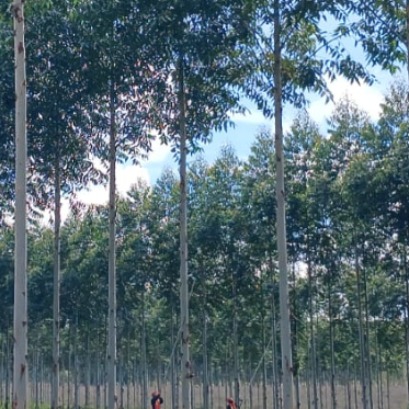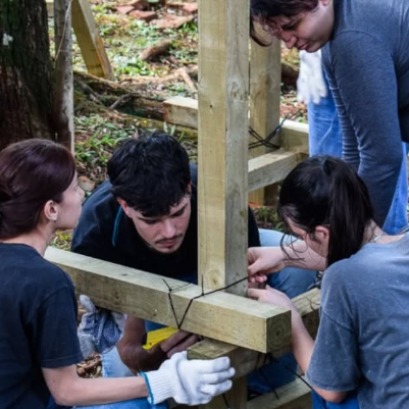
Uruguay | Construction of the first wooden high-rise building in the country
Construction will begin in November
The first ecological housing building will be built in Durazno by the Ministry of Housing and Territorial Planning. Although there are still adjustments, its construction would begin in November of this year and would have a term until September 2024; the investment will be about US$ 3.5 million.
The National Housing Agency (ANV) and the Ministry of Housing and Territorial Planning (MVOT) signed the agreement in June to continue advancing in the definition of the project that marks the construction of the first wooden high-rise building, to be developed in the city of Durazno with a total of 7 floors for social housing.
Last week, the president of the National Housing Agency (ANV), Arch. Klaus Mill, and the vice president of the ANV, Gustavo Borsari, met with the Minister of Housing, Raúl Lozano, and the national director of Housing, Jorge Ceretta, to establish, through an agreement, the terms that both institutions will carry out in the development and execution of the first project for the construction of wooden houses in height that will be developed in Durazno, specifically in the capital of the department.
“This is the first building to be built for social housing in Uruguay and that involves South America, with the exception that Chile may also be in this process. It is a very important milestone that the Public Housing System can have a building with wood technology of medium to high quality, monitored, in addition, by international experts”, affirmed Mill.
This project is part of the international competition to encourage the development of innovative construction systems in wood, open from January 23 to May 15 and for which five national and international bidders presented themselves.
“On June 15, the ANV will make the ruling and, then, the other bidders will have 10 days of hearing to generate queries. After that period, the Board of Directors will award the project to the winning bidder, who must start working on the executive project as of July 6 and begin work in November," said the president of the ANV.
Therefore, the elucidation of the ruling is awaited, which will be announced by the company that will be in charge of the construction of the structure.
Although there are still adjustments to be made, its construction would begin in November of this year and would have a term until September 2024; the investment will be about US$ 3.5 million.

IT MAY INTEREST YOU
 Paraguay | The plantations became instruments of territorial development and the generation of decent employment, INFONA highlights.
Paraguay | The plantations became instruments of territorial development and the generation of decent employment, INFONA highlights.
Plantings in different phases, control of ants and weeds, pruning and thinning, mechanized harvest, technology applied to the field and complete integration of the production cycle were part of the CREA Forestal proposal in its Technical Update Conference – JAT Forestal 2025. The event took place on Friday, November 14, at Estancia Ñemity, located in San Juan Nepomuceno, Caazapá, where agricultural producers, technicians, contractors, students and companies in the sector met to observe the forestry business of the future in action.
 Architecture with identity: university students from Argentina and Paraguay design and build with missionary wood
Architecture with identity: university students from Argentina and Paraguay design and build with missionary wood
The Faculty of Art and Design (FAyD) of the National University of Misiones (UNaM) hosted the inauguration of the first edition of “Yvyvyrá: territory, matter and architecture”, an international workshop that promotes learning, experimentation and architectural design using wood and other materials typical of the biomes of the Atlantic Forest (Paranaense Forest) and the Humid Chaco.
 The second largest wetland in South America is located in Argentina: what is it?
The second largest wetland in South America is located in Argentina: what is it?
Argentina has national parks that place it in a unique position within South America, competing with 300 others. Which is the largest? South America is home to more than 300 national parks, but many go unnoticed. There are extensive wetlands that have been the subject of major ecological restoration projects, to coastal mountains with deep indigenous heritage. Today we tell you the case of one located in Argentina.





















